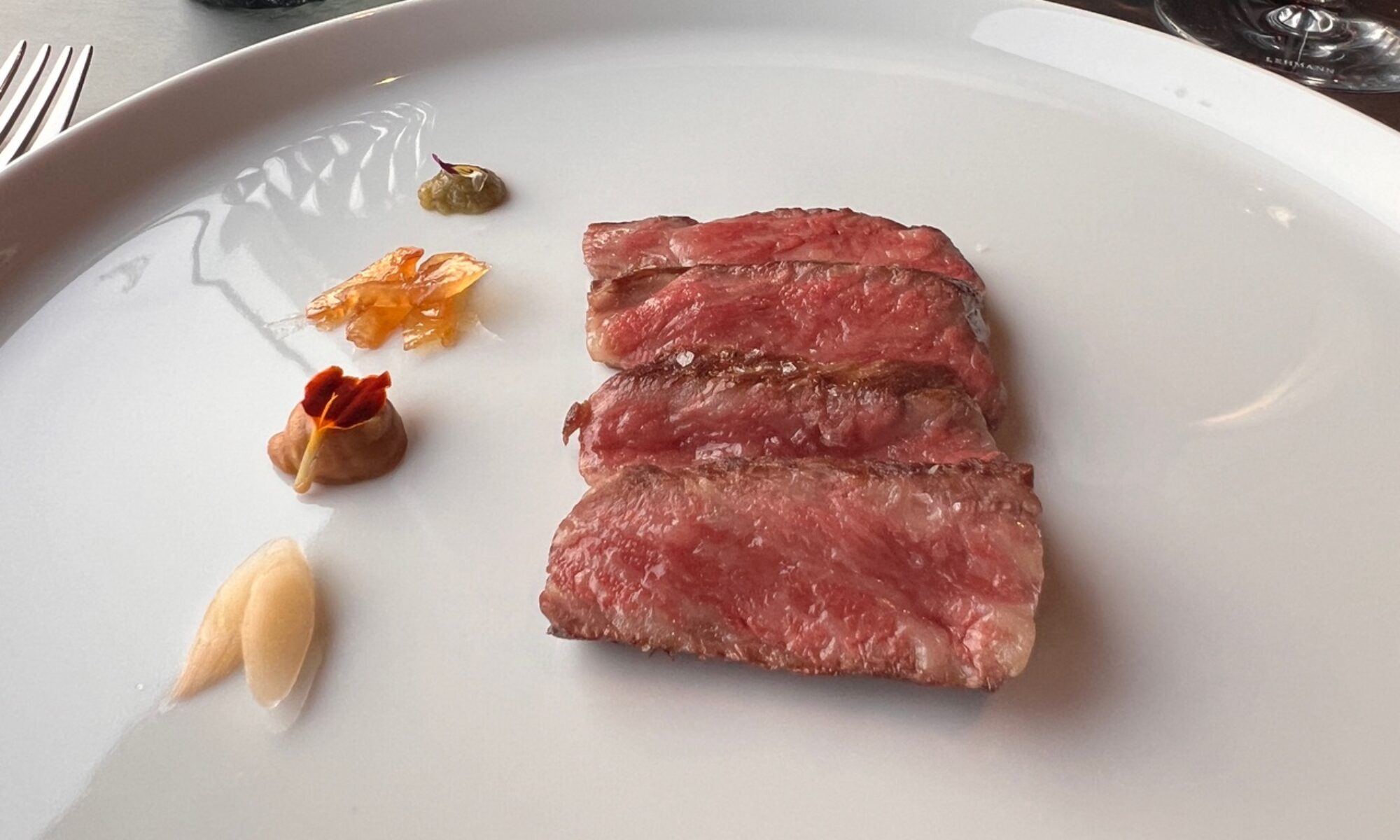Was bei uns der rote Guide ist, ist in Schweden der White Guide – Jedes Jahr vergibt der renommierte White Guide den „White Guide Global Gastronomy Award“ an den für den White Guide derzeit besten Koch der Welt – in 2014 ist das Massimo Bottura in Modena, Italien
Hier die Mitteilung des White Guides aus Schweden:
For the eighth year running, White Guide proudly presents the White Guide Global Gastronomy Award laureate. The distinction is given to a creative chef of international prominence, who is at the apex of his or her professional orbit and who has become an example and inspiration within and for contemporary gastronomy.
Massimo Bottura, osteria francescana, Modena, Italien.
The jury’s motivation: For continuously reinventing one of the world’s most beloved cuisines – the Italian
– and elevating it to new amplitudes for senses and minds to explore and enjoy. In constant dialogue with a rich but conservative tradition, Massimo Bottura has developed a dazzling culinary artistry, covering a broad range of expressions from the seemingly simplistic to the intellectually complex. Re-engineering what a meal could and should be all about – bridging history with future, North with South, technology with legend and culture with environment, all with an artist’s sensitivity and passion – he has been a major force in evolving the gastronomy of Italy from a standstill backwater to the bubbling melting pot of great traditions and talented innovation it is today.
Chef Massimo Bottura has been named by Italian art critic Achile Bonito Oliva as the sixth me member of the Italian “transavanguardia” art movement, which expressed the crossover of traditional painting techniques with modernist thinking to embrace a new style of contemporary Italian art in the 1980s with painters Chia, Clemente and Palladino at the forefront. Indeed, there are many parallels to Massimo Bottura’s work in gastronomy.
After having worked with Alain Ducasse at Louis XV in Monaco, Bottura opened Osteria Francescana in his native Modena in 1995. Inspired by the artist movement and his experiences abroad, he began applying critical rigour and contemporary culinary techniques. The results were often met with bitter outcries. Accused of turning his back on Italy’s culinary heritage, Bottura realised that he had to win his conservative compatriots over and so he began to re-create traditional recipes in a playful manner. A mortadella sandwich became a Memory of a Mortadella Sandwich in the form of a concentrated mortadella foam with a bite of crunchy bread. A classic Tagliatelle al ragù was re-constructed by cooking each cut of meat separately:
then assembling the ragù on the plate. The northern Italian tradition of boiled meats became Bollito, not Boiled. Here once again he embraced tradition by abandoning traditional cooking methods in favour of sous-vide to improve flavour and texture.
In 2000 he met Ferran Adrià. After working a season in his kitchen, he returned to Modena even more convinced that evolution was the only way to bring the rich culinary Italian heritage into the future. Thus he began a series of recipes called ’Tradition in Evolution’ which would become his trademark over the course
of his career. His in-depth investigation of the Classics, trying to understand what had become routine and where a new understanding of ingredients and technology could restore the classic dishes and even elevate them to new heights, brought him recognition not only in Italy but also abroad. In 2002 he was awarded his first Michelin star and with each consecutive star – the second came in 2006 – Bottura invited his guests to join him on more adventurous journeys to discover the rich plethora of Italian produce, ingredients, traditions and artisans. “Tradition in Evolution” is still the foundation of Bottura’s philosophy, and the continuous exploration of Italy – from the Alps in the North to the outmost tip of Pantelleria in the South – his quest.
In recent years Bottura has taken some crucial initiatives to safeguard and salvage threatened culinary assets and fragile habitats, such as the river Po delta and lagoons, home for its rare and endangered eels. He has also initiated campaigns to support and promote producers and artisans reeling from the devastating earthquakes to hit Northern Italy in 2012.
A third star was bestowed on the stunningly beautiful Osteria Francescana in the historical centre of Mode- na at the end of 2011. Its walls testify as much to Bottura’s – and his wife Lara’s – love for art, as his dramatic plating vouches for his culinary artistry. Today Massimo Bottura is one of the world’s most celebrated chefs, and his restaurant ranks among the top 3 on The World’s 50 Best Restaurants list.
Previous winners of the White Guide Global Gastronomy award:
2007: ferran adrià, el bulli, roses, spain
2008: Charlie trotter, Charlie trotter’s, Chicago, usa
2009: fergus henderson, st. John, london, england
2010: rené redzepi, noma, Copenhagen, Denmark
2011: alain Passard, l’arpège, Paris, france
2012: David Chang, Momofuko, new york, usa
2013: Gastòn acurio, astrid y Gaston, lima, Peru
www.whiteguide.se
www.osteriafrancescana.it

